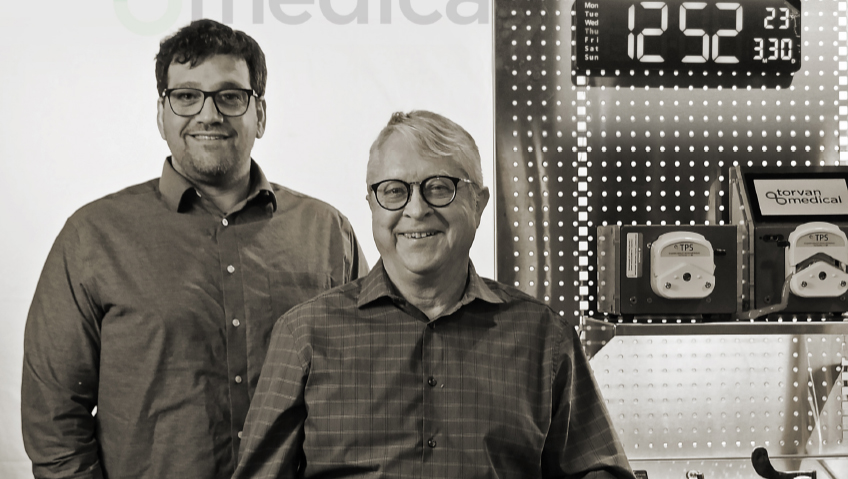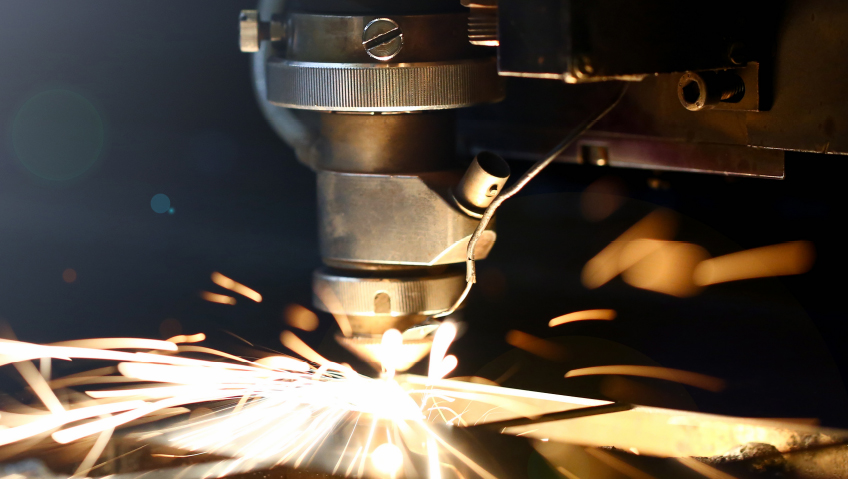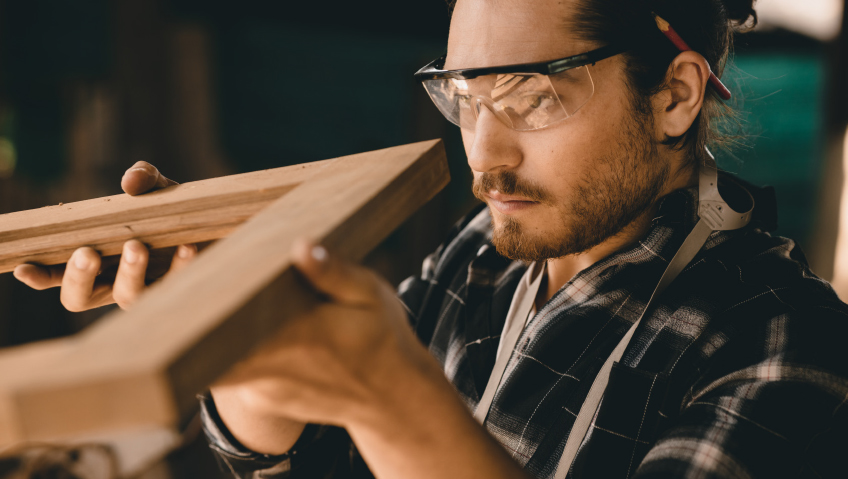A leading company in the design and production of products for medical and scientific sectors, Torvan Medical employs exemplary craftsmanship with a focus on creating and marketing cutting-edge products for infection control and preventing cross-contamination. Whether it’s ergonomic decontamination devices such as sinks, height-adjustable workstations, or endoscopic cabinets, Torvan continually stays ahead of the curve.
Established in 2010 by Chris Glencross, a mechanical engineering graduate with a second degree in biology, and a friend from the University of British Columbia, the name “Torvan” encapsulated their two locations—Toronto and Vancouver.
The company started as a distributor, and was thus met with the opportunity to observe what medical equipment was made and offered, how customers responded, and what could be improved upon. With the medical industry extensively regulated, having access to someone who specializes in those limits and guidelines was imperative. Doug Brown, who has been involved in the medical industry since 1985 and now Director of Sales and Marketing, acted as an in-house advisor on product development that either complied with or exceeded requirements for the medical environment.
“I had already been working in medical at this time designing and building operating rooms, and we were just looking for products to offer,” explains Glencross. “Doug and I, who had previously worked together for a multinational company, had gotten back in touch with each other. He was working for a stainless steel manufacturer, bringing them into the medical industry, and we were actually that company’s first distributor in healthcare.”
When declining margins became a problem, the team’s attention turned from selling to manufacturing. “We were engineers, and we knew how to design,” he says. “So we started designing and building our own products, and that’s when I asked Doug to come and join us.”
When stricter regulatory changes impacted the healthcare world, a market opened up for Torvan, he adds. The company caught the attention of some other large companies, started manufacturing for them, and was the first in North America to make a drying and tracking endoscope storage cabinet. While a few other companies were building cabinets for scope drying, Torvan was the first North American manufacturer to use electronics and touchscreens in North America to aid in the monitoring and auditing of scope flow at the cabinet.
“We discovered we were really good at integrating technology and redesigning to what the customer needs because we weren’t a multinational, and quite honestly, we were looking for business,” says Glencross. “It allowed us to develop our own tech ahead of other companies because we weren’t fenced in by the box of a large corporation. But in a weird way, we were being supported by one, because we were OEMing to them. This gave us a good strong financial foundation to work with, which allowed us to build a very strong technical foundation.”
The company successfully pursued OEM relationships with significant medical manufacturers and distributors with their advanced technology and modular expansion ideas, which has set it apart from most other equipment vendors and contributed to its success. Additionally, local fabricators were used in the production of fully upgradeable equipment and modular add-ons were used to boost the equipment’s capabilities rather than replace what was already being used in the facilities. Torvan was also able to further its objective of being “at the forefront of the technology curve” because its products were sold through international OEM partners.
Torvan has been working steadily over the years developing products and fine-tuning its processes, as it was continually “under the microscope” in the beginning. “We’d always had a Health Canada Medical Device Establishment License, but we also had to get an FDA Manufacturers License which was good,” adds Brown. “And then we had to get ISO13485 certification.” There was a period where Torvan was literally being audited every month by different organizations to ensure it was following all the rules and guidelines, adds Glencross.
Ultimately, however, the ongoing scrutiny helped the company’s quality and processes, especially vital when working in the medical field. “We’ve specialized where infection control and cross-contamination are issues,” says Glencross. “So endoscope areas, medical device reprocessing areas, and in 2020 we bought the assets of a company called Unilab, so we’ve been producing scientific lab furniture, and we’ve always produced pathology equipment.”
While pathology grossing stations—workstations where pathology specimens are processed for additional microscopic evaluation—are now becoming a significant area of business for Torvan, it was the company’s scope cabinets that really put it on the map.
“It took time for us to really develop them properly, which is what we did,” says Brown. “And we designed them in such a way that they were modular; nobody else was doing that. So again, [we were] ahead of the curve.”
Torvan’s comprehensive array of high-quality stainless steel scope cabinets provides benefits for easy cleaning and longevity and a smooth, quiet operation along with HEPA and channel drying. “A lot of people realized that was going to be a necessity,” says Brown. “We designed our products so we could upgrade their cabinet on site. Everything we design is scalable.”
The company’s most successful product is its endoscope cabinet. Using OEM distribution, Torvan has about 60 to 70 percent market share on its tracking cabinets in North America, and a reach as far away as Chile and the Middle East. Torvan’s latest push is its sink systems and pump systems, however. Designed for sterile processing departments, the sinks combine E-drain—the use of an electronic solenoid—bottom fill, overflow protection, and height-adjustable features with a new E-sink touchscreen central control to produce a more effective and ergonomic sink.
“These are used in areas where they’re cleaning contaminated instruments and scopes used in surgery and endoscopy,” says Brown. “They don’t want their staff reaching in like we would at home with our kitchen sink to pull the drain plug. So there’s what’s called an external drain.”
In the past, drain operation was primarily mechanical, using a lever or a pole typically located underneath the sink. Over time, these drains would regularly break, but the use of an E-drain resolves those issues. Overflow is another concern that Torvan has addressed. The E-drain sensor picks up on the potential of a sink overflowing and opens the drain, preventing a costly and potentially harmful mistake.
“Overflow protection doesn’t sound like much, but you’d be amazed,” adds Brown. “Somebody’s working away, filling up a sink, they get called away and next thing you know, it’s all over the floor.”
If an SPD (sterile processing department) goes down due to overflow issues, it adversely affects an entire hospital or clinic, adds Glencross, because you can’t sterilize equipment for ERs, ORs or GI departments.
“When you’re talking about forward-thinking innovations, that’s the stuff that we do,” he says. “Now our sinks have touchscreens and gesture sensors on them. There are pumps being attached and devices used to automate, like filling, draining, pumping, and dosing of chemicals, done with potentially a touch of a button.”
Torvan’s innovation extends to the development and distribution of other products, including completely redesigning its lab line to make it more easily manufactured and shipped to customers using materials like phenolic board, a “big piece of epoxy” that has been pressed together with tens of thousands of tons or pressure. Resembling the top of the desk, it’s actually a solid piece of material, so even if cut or nicked, it limits the mold and bacteria growth.
“We’re [increasing our focus] using different materials for different jobs,” says Glencross. “When we design our equipment, we often design it to be built out of multiple materials.” Torvan’s packing prep tables, or wrapping tables—large, height-adjustable workstations—can be built with stainless steel or with phenolic tops, depending on the look, feel, and purpose of that particular table.
This ability to continually pivot to satisfy customer needs isn’t the only quality that puts Torvan above its competition. “What sets us apart from other companies? Probably innovation,” says Glencross. “And I know everybody says that, but we actually mean it.”
Brown agrees. “We listen to end users. In a lot of cases some of the ideas we’ve gotten in our products have come from suggestions by end users, and we bring it back and the engineers incorporate it,” he shares. “That’s extremely important—listening to who we’re working with and getting them products that work for them.”
A lot of other companies in the sector are essentially copycat companies, adds Glencross. “Admittedly, when we started, we were too, but quite honestly, nowadays, we don’t care what the competition is doing,” he says. “Because the customer will tell us what they want. We don’t have to have the competition showing us what they’re doing.
In short, Torvan isn’t driven by its rivals. The team creates new technology to carry out the tasks necessary in the constantly evolving medical business in order to satisfy the desires and wants of its clientele. “Some of our competition now are mimicking what we’re doing,” adds Brown. “But imitation is the best form of flattery.”
That being said, as Torvan looks to the future, it has its own milestones it’s looking to achieve.
“While we’re relaunching our entire lab line, we’ve got a couple of fairly intense medical products coming out in the next few years,” says Glencross. “We’re also really upping our sales game now, because quite honestly, we always sold by word of mouth. We’ve never actually had a real sales force before.”
While in the past, Torvan has worked only through distributors, it’s now expanded in the U.S., including the addition of a National Sales Manager, with the goal of continued growth while building the Torvan name. “It’s really, for us, the next evolution of the company,” says Glencross. “It’s about expanding us as a brand.”
That brand also includes an outstanding company culture that thrives on collaboration, communication and support from the top down. “We’ve got a really good bunch of people here,” says Glencross, “and our turnover is very, very low.”
And while Brown and Glencross have both previously worked for multinationals, after experiencing Torvan’s philosophy, they would never go back.
“This is a great company to work for and be part of,” says Brown. “We’ve got young engineers I’ve had the opportunity to travel with, who at one point I thought would come to work here for a couple of years, get some experience, and then move on maybe to something else, but as they got entrenched in the company and realized where we’re going and what we’re doing, they said, ‘it’s a no brainer to stick around.’”






